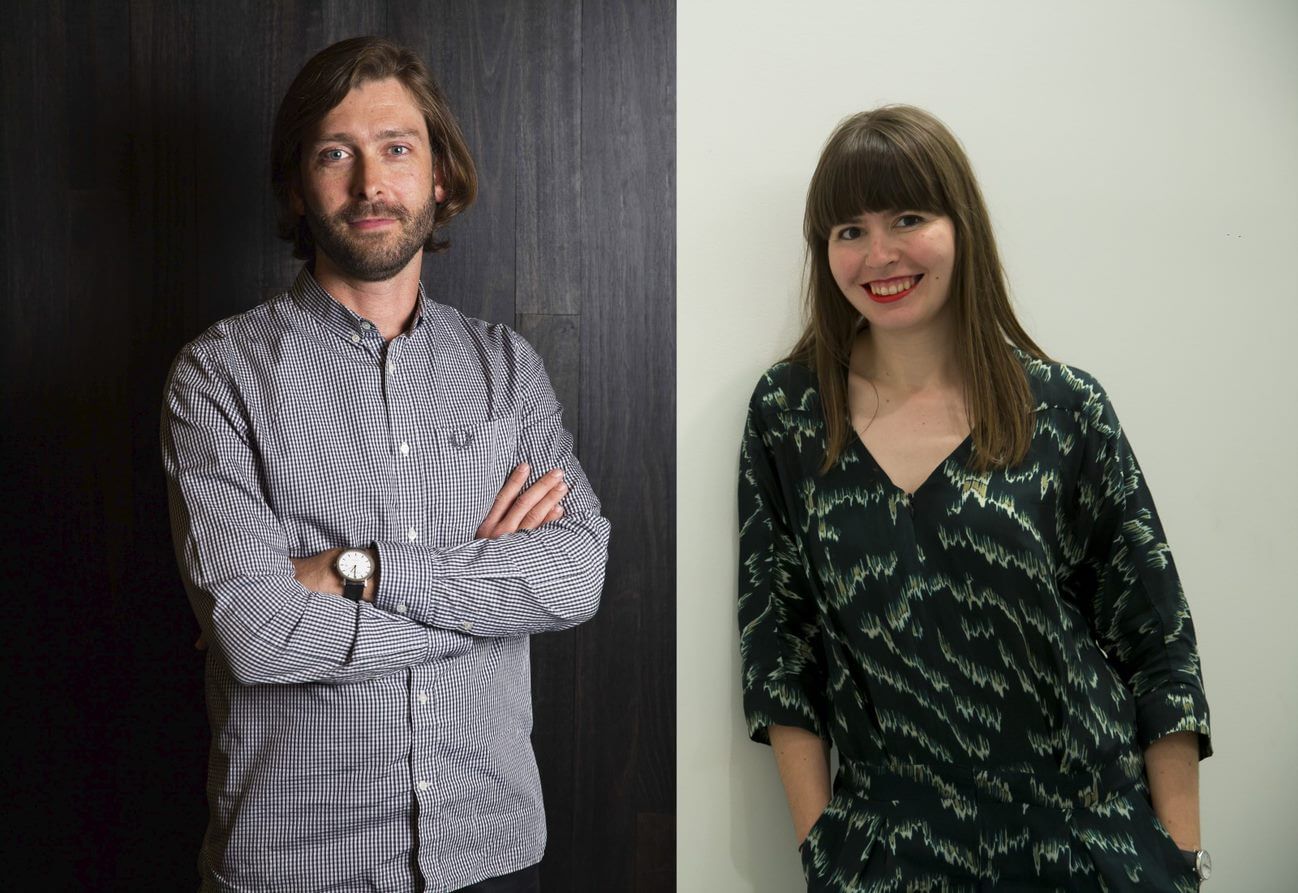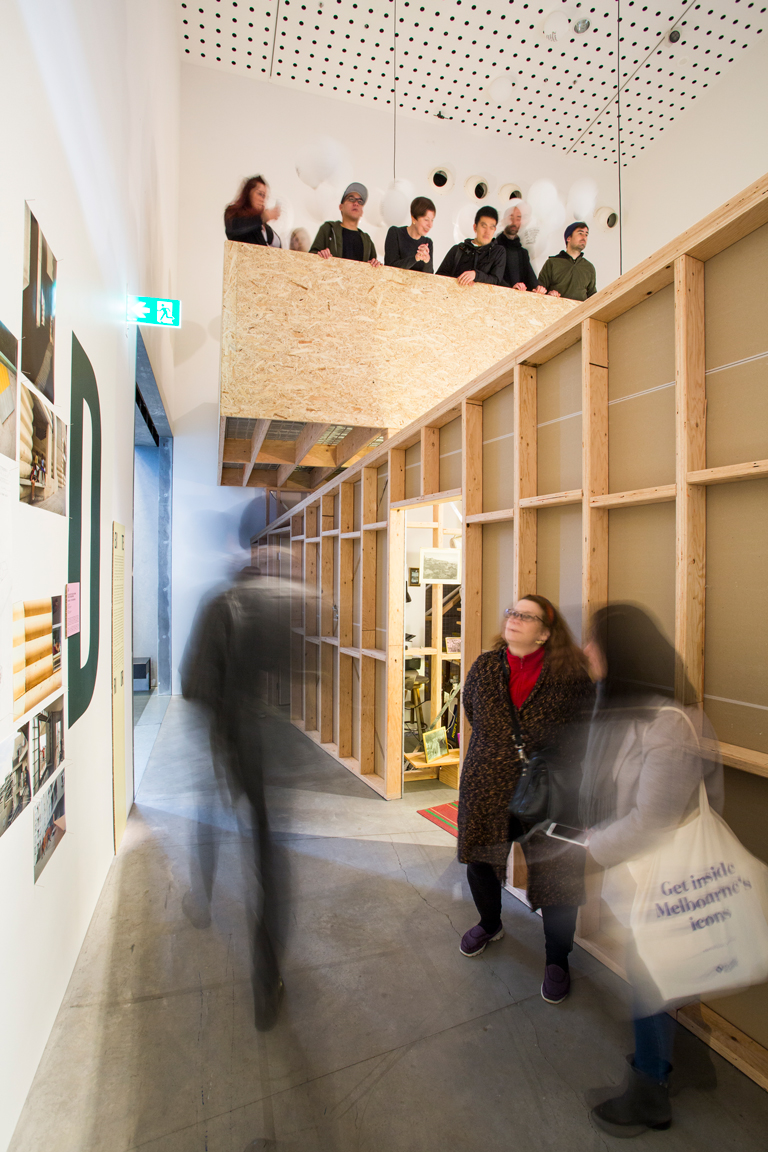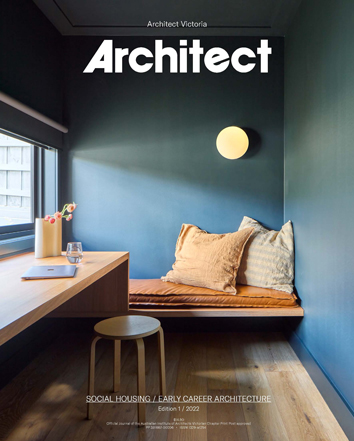Emerging Architect Prize: Alexander & Sheridan Architecture
Interview with Jacqui Alexander by Daniel Moore

In 2021, Jacqui Alexander and Ben Sheridan were the Victorian recipients of the Emerging Architect Prize. With a diverse CV of research, publications, exhibitions, and built work, Daniel Moore spoke with Jacqui about her achievements in the time that she has been emerging in the architecture profession.
Q: The Emerging Architect Prize is a great initiative. How do you feel about the concept of “emerging” in architecture? Some people might look at the recipients of the prize, see that they’ve been in the profession for 10 plus years and think, haven’t they already emerged?
Yeah, it’s quite funny. I’ve been joking with some colleagues about what constitutes “emerging”. I mean, it’s such a slow burning industry. There’s the glacial speed of architectural production and waiting for things to be built and I guess that’s the thing… it’s not really something that’s easy to do on the side. So, if you’re doing other roles and other bits and pieces, it takes a really long time to establish yourself. I think having received that award is nice, because it gives us confidence that the institute is happy to recognize different kinds of practices and contributions as well, because we’re not purely an architecture practice in the traditional sense. I bring my architectural research to the practice and we’re trying to steer the practice in a direction that does design research as well as architectural projects. So, it’s a real honour to be recognised by the institute as a different kind of collaborative model.
Q: You were also involved with EmAGN a few years ago and you were sitting at the table with other people who had quite a lot of experience under their belt. Do you think there’s a benefit to being in the EmAGN committee when you are a fresh grad or before you’re registered, to sit down with people who have started their own young practices?
Definitely, I remember that time vividly. I was co-chairing EmAGN VIC with Tom Morgan, who also works at Monash – he’s now the program director for the Bachelor of Architecture. Thom McKenzie of Winwood McKenzie was on the board, and he received the Emerging Architect Prize in 2020. Stuart Harrison, Simon Knott and Michael Roper were on the committee as well. So, there were lots of us at different stages of our career and it was a really valuable time. It gave me so many insights into the world of practice, the challenges of starting out and different approaches. A lot of those people weren’t just practising architecture in the sense of just making buildings, but they were involved in other projects too, for example Stuart and Simon ran The Architects show on RRR, and many members of the committee were really dedicated to creating a culture around architecture at the time, which was super inspiring to me and I think has been a legacy of that period.
Q: What did you take away from that time when you thought about the trajectory of your own career?
I had a new insight into the generosity of the architecture community, especially in Melbourne. There’s also a generous culture in other states, but there was less going on, and Melbourne was very vibrant at the time. There was a real sense of culture-building within the architecture industry, but also a genuine attempt to reach out to wider audiences and position architecture’s role and value in broader society. That was something that I was really interested in, and something that Tom, Ben and the other editors of POST Magazine were always pursuing through that project, so it was affirming in that way. But I also learned at that time that architecture is not just about making buildings. It doesn’t have to just be about making buildings. Architecture is a profession where all sorts of activities are part of the culture, whether it’s education, writing, advocacy, public lectures, or broadcasting, for me: it’s all architecture.

Q: You’ve also been able to do exhibitions almost as a form of prototyping, which must be so informative for your built projects.
Definitely. I think one of the threads of our practice has come through my specialised area of research, which is looking at how new forms of platform technology and digital media are transforming architecture. I’m interested in exploring how these sorts of technologies, spatial technologies, like GPS and smartphone technologies can start to have an innovative role within architecture. For example, there’s a project that I designed at the RMIT Design Hub a few years ago called Supershared in collaboration with Timothy Moore from Sibling where I was looking at the possibility of working with space-sharing platforms to transform the city. We purpose-built this little loft, which was quite a tiny little space within the Occupied exhibition, curated by David Neustein, Grace Mortlock and Fleur Watson. We listed this loft on a number of different sharing economy platforms at the same time, and then allowed people to book into the space and live and work in it for the duration of the exhibition, to create an unpredictable element to the show. But because the space had been booked on a whole variety of platforms, it created a situation where different groups of people arrived at the loft at the same time to perform different kinds of activities, and there was this real intensification of the space that occurred through that process. It suggested that platforms can be used as a tool to rethink program, create hybridity and activate space in new kinds of ways.
Q: It sounds like there are interesting applications for social sustainability through the benefits of chance encounters.
Yeah, those sorts of things. I can also see it could be a really useful tool in suburbs or regions that might need rejuvenation or could benefit from more foot traffic or greater densities. We can work with the time contingencies of these platforms to be able to use them short-term to stimulate activity and then switch them off again.
Q: It’s great that you have the evidence to back up how well it works. There are also quite a few young practices who are kick starting their own aspirational projects. Have you started to develop your research projects into anything broader where you might put out an EOI or something to ask if there are any clients who’d like to back one of your concepts?
We have been using speculative design as a vehicle to start those conversations. I think it’s a really important point that you bring up because going back 10 or 15 years, there was a lot of interest in Melbourne during the GFC around unsolicited projects – I remember Rory Hyde talking about some of those potentials. I think that’s one of the great benefits of the research side of our practice, because when you’re practicing as an architect and you’re running your own business, you’re beholden to client commissions coming through the door, but through research projects you can undertake design work in a slightly different way that doesn’t rely on clients’ ideas and you are at arm’s length from those commercial imperatives. You can pursue speculative ideas that are a bit more ‘blue sky’ and experimental.
Q: So, you can push the boundaries of design in your research projects without needing to encourage a client to allow you to try something innovative?
That’s totally right. For me anyway, that research aspect really sort of starts to open up possibilities for a sort of civic practice and the idea that architecture doesn’t have to be beholden to the market all the time. So, one of the projects that we’ve done along those lines is a project called Tenancy does not equal Title, which combines my research interests in alternative housing models, and also Ben’s expertise in the design and delivery of multi-residential housing towards a model for de-commodifying housing, based on a community land trust approach. So hopefully, that means that we’ll be able to start to craft our practice in that kind of direction.
Q: You’ve had such a unique career in architecture so far and there are some really exciting projects still to come. Now that you’re the Victorian Emerging Architect Prize recipient you can surely qualify as emerged now. What does winning the prize mean for you and your practice moving forward?
The fact that we’re an unconventional practice in the sense that I’m an academic practitioner, Ben’s an architect, and we’re stitching those approaches together has been a bit of an experiment. There are architects around the world operating semi-speculative practices with one foot in academia and the other in practice. But here in Melbourne there are far fewer. So, receiving this award is a really lovely validation for us that we’re moving in a good direction and that there’s interest in our work. We’re very honoured and very happy to be the first collaboration to have received the award and hopefully when COVID is under control we can have an opportunity to share some more of the work that we are doing with the architecture community.
Jacqui Alexander RAIA is a co-director of Alexander & Sheridan Architecture and a senior lecturer at Monash University, where she is also a PhD candidate. She studied a Masters of Architecture at RMIT and worked at Kerstin Thompson Architects for six years on projects including House at Hanging Rock as well as Aesop shops and the Monash University Museum of Art (MUMA). During that time Jacqui was also teaching a history and design studio at Monash University early on when the Monash architecture course was established. She has also had a parallel career in writing and publishing, starting POST Magazine as a student and working at Monument magazine.
Daniel Moore RAIA is an architect and director of the architecture and creative practice Open Creative Studio. Daniel is the immediate past co-chair of EmAGN Victoria, a curator of New Architects Melbourne, and the host and co-producer of Hearing Architecture and the New Architects Podcast.




